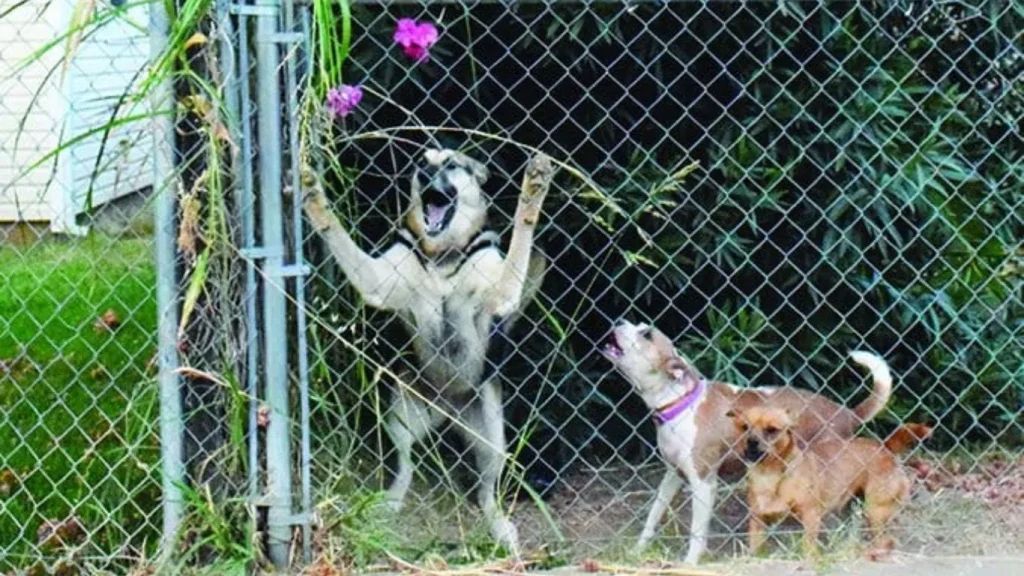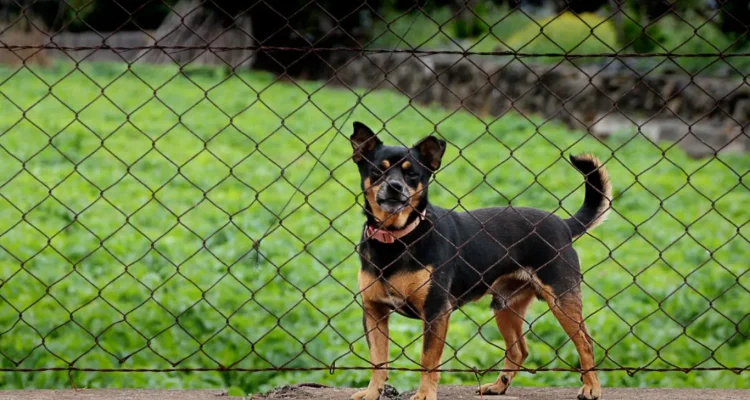Introduction
Got a furry Houdini on your hands? If your dog treats your backyard fence like a mere suggestion, you’re not alone. Dogs jumping fences is a common problem that can lead to lost pets, accidents, and all sorts of mischief. Tackling this issue is crucial for your dog’s safety and your peace of mind. Let’s dive into some effective strategies to keep your dog safe and sound within your yard.

Understanding Why Dogs Jump Fences
Before we fix the problem, we need to understand it. Why do dogs feel the need to leap over barriers?
Curiosity and Exploration
Dogs are naturally curious creatures. The grass often seems greener on the other side, and your dog might just be seeking new sights, sounds, and smells.
Separation Anxiety
If your dog suffers from separation anxiety, they might jump the fence in a desperate attempt to find you. This is particularly common if they’re left alone for long periods.
Fear and Panic
Loud noises, thunderstorms, or fireworks can scare your dog, leading them to jump the fence in a panic.
Mating Instincts
Unneutered dogs might jump fences to follow their natural mating instincts. This is especially common during mating seasons.
Preventative Measures
Now that we know why dogs jump fences, let’s look at how to prevent it.
Choosing the Right Fence
Height Matters
A fence that’s too low is an open invitation for your dog to jump. Aim for a fence that’s at least six feet tall, depending on the size and jumping ability of your dog.
Material Considerations
Some dogs can easily climb chain-link fences. Opt for solid wood or vinyl fences that are harder to scale.
Installing Fence Extensions
Adding extensions to the top of your fence can make it more challenging for your dog to jump over. These can be inward-leaning or even add height to the fence.
Using Landscaping as a Barrier
Strategic planting can help. Shrubs, hedges, or even thorny plants along the fence line can act as natural deterrents.
Training Techniques
Training is key to preventing fence jumping.
Basic Obedience Training
Commands like “stay” and “come” can keep your dog from approaching the fence.
Positive Reinforcement Strategies
Reward your dog for staying away from the fence with treats and praise. Consistency is crucial here.
Desensitization Techniques
Gradually exposing your dog to the triggers that make them want to jump the fence can reduce their anxiety and excitement.
Physical Barriers
Sometimes, physical barriers are the best solution.
Coyote Rollers
These are metal bars that rotate when a dog tries to grab onto the top of the fence, preventing them from getting a grip.
Lean-Ins
Angled extensions that lean inward at the top of your fence can prevent dogs from getting over.
Adding Height to Existing Fences
If replacing your fence isn’t an option, consider adding height to it. This can be done with additional panels or mesh.
Technological Solutions
Modern technology offers several solutions to keep your dog inside the yard.
Wireless Fences
These systems use a transmitter to create an invisible boundary. When your dog approaches the boundary, they receive a warning beep followed by a mild static correction if they continue.
Invisible Fences
Similar to wireless fences, these require burying a wire around your property to create a boundary. These are often used in conjunction with training to teach your dog where they can and cannot go.
Monitoring Systems
Cameras and alarms can alert you if your dog is trying to jump the fence, allowing you to intervene quickly.
Behavioral Solutions
Addressing the root causes of fence jumping can be highly effective.
Addressing Boredom
A bored dog is more likely to jump the fence. Ensure your dog has plenty of toys, activities, and human interaction.
Increasing Exercise
A tired dog is a happy dog. Regular walks, playtime, and mental stimulation can reduce your dog’s desire to escape.
Mental Stimulation
Puzzle toys, training sessions, and interactive games can keep your dog’s mind occupied and away from thoughts of escape.
Safe Outdoor Spaces
Creating designated safe spaces can help keep your dog contained.
Creating a Dog Run
A secure dog run within your yard can give your dog space to roam without the risk of escaping.
Using Temporary Fencing
For short-term solutions, temporary fencing can be used to create a barrier within your yard.
Addressing Anxiety and Fear
An anxious dog is more likely to jump fences.
Calming Products
Products like calming collars, sprays, or even certain supplements can help reduce your dog’s anxiety.
Professional Help
In severe cases, consulting a professional dog trainer or behaviorist can be invaluable.
Regular Monitoring and Maintenance
A fence is only as good as its condition.
Checking for Weak Spots
Regularly inspect your fence for any weak spots or areas where your dog might be able to escape.
Regular Fence Inspections
Make it a habit to walk the perimeter of your yard, checking for any damage or potential escape routes.
FAQs
What are coyote rollers and how do they work?
Coyote rollers are metal bars installed on top of fences that spin when a dog tries to grab onto them, preventing the dog from getting a grip and climbing over.
Can an invisible fence harm my dog?
Invisible fences use a mild static correction that is not harmful but can be uncomfortable. Proper training is essential to ensure your dog understands the boundaries without experiencing undue stress.
How high should my fence be to prevent jumping?
A fence should be at least six feet tall, though some dogs may require even higher barriers. The specific height depends on your dog’s size and jumping ability.
What are some effective ways to reduce my dog’s anxiety?
Calming products, increased exercise, mental stimulation, and in severe cases, professional help can all be effective in reducing your dog’s anxiety.
How often should I check my fence for damages?
Regularly inspect your fence at least once a month, or more frequently if you know your dog is an escape artist. Look for weak spots, damage, and potential escape routes.
Conclusion
Keeping your dog from jumping the fence requires a combination of training, physical barriers, and understanding your dog’s needs. By implementing these strategies, you can ensure your furry friend stays safe and secure within your yard.


Congratulation!